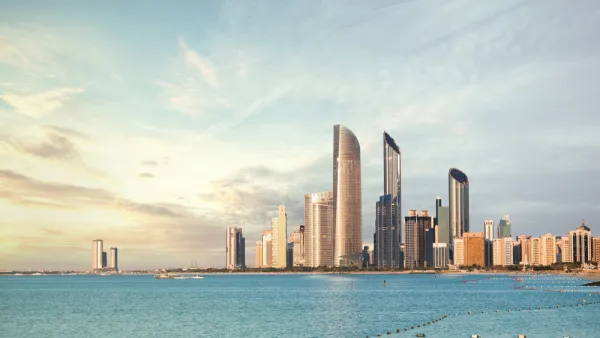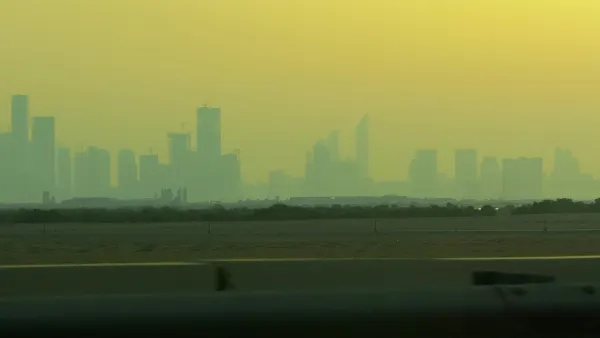This article from The National takes a tour of Abu Dhabi with architect and planner Riyad Albuhlaiga, who points out the best parts of the city -- and the parts that must be improved to make Abu Dhabi a truly great city.
"'They call it the lungs of Abu Dhabi because of the large green areas here. They have created a really nice landscape,' he says. 'The vegetation is fantastic!'"
"The coastline along the Corniche was extended by developers less than a decade ago, and considering the fact the entire area was originally comprised of sand dunes, the amount of green here is spectacular."
"The shore side of the Corniche is lined with white tents, under which, Albuhlaiga says, more restaurants, cafes and vendors should be moving soon. The bike lane that extends the length of the road is another attraction, albeit a weather-permitting one."
"Connectivity, Albuhlaiga says, is what makes the Corniche so important."
"'It connects the fish market, the harbour, kids' playgrounds, places to eat, shop, walk and sit. We can say the Corniche is a successful public space because it is a destination in itself, not just a way to get from A to B.'"
"That may be so, but he quickly adds that the road that cuts the shore side from the park side is a hazardous one, contributing to air pollution and noise pollution. It's also the site and cause of many accidents. The benches that frame the bike path are placed between tall trees – though they have only few leaves and provide no shade. And while the Corniche is one of the few places in Abu Dhabi where outdoor spaces have been designed specifically with people in mind, Albuhlaiga says the underground crossings to get from one side of the road to the other are symbolic of the city's enduring priority of vehicles over pedestrians."
"But he is confident the Corniche is a success: 'If Dubai is for shopping, Abu Dhabi is for relaxing.'"
"'It's worth changing Abu Dhabi to a pedestrian city. It would make it a better place to live.'"
FULL STORY: Tales of the city

National Parks Layoffs Will Cause Communities to Lose Billions
Thousands of essential park workers were laid off this week, just before the busy spring break season.

Retro-silient?: America’s First “Eco-burb,” The Woodlands Turns 50
A master-planned community north of Houston offers lessons on green infrastructure and resilient design, but falls short of its founder’s lofty affordability and walkability goals.

Delivering for America Plan Will Downgrade Mail Service in at Least 49.5 Percent of Zip Codes
Republican and Democrat lawmakers criticize the plan for its disproportionate negative impact on rural communities.

Test News Post 1
This is a summary

Test News Headline 46
Test for the image on the front page.

Balancing Bombs and Butterflies: How the National Guard Protects a Rare Species
The National Guard at Fort Indiantown Gap uses GIS technology and land management strategies to balance military training with conservation efforts, ensuring the survival of the rare eastern regal fritillary butterfly.
Urban Design for Planners 1: Software Tools
This six-course series explores essential urban design concepts using open source software and equips planners with the tools they need to participate fully in the urban design process.
Planning for Universal Design
Learn the tools for implementing Universal Design in planning regulations.
EMC Planning Group, Inc.
Planetizen
Planetizen
Mpact (formerly Rail~Volution)
Great Falls Development Authority, Inc.
HUDs Office of Policy Development and Research
NYU Wagner Graduate School of Public Service




























